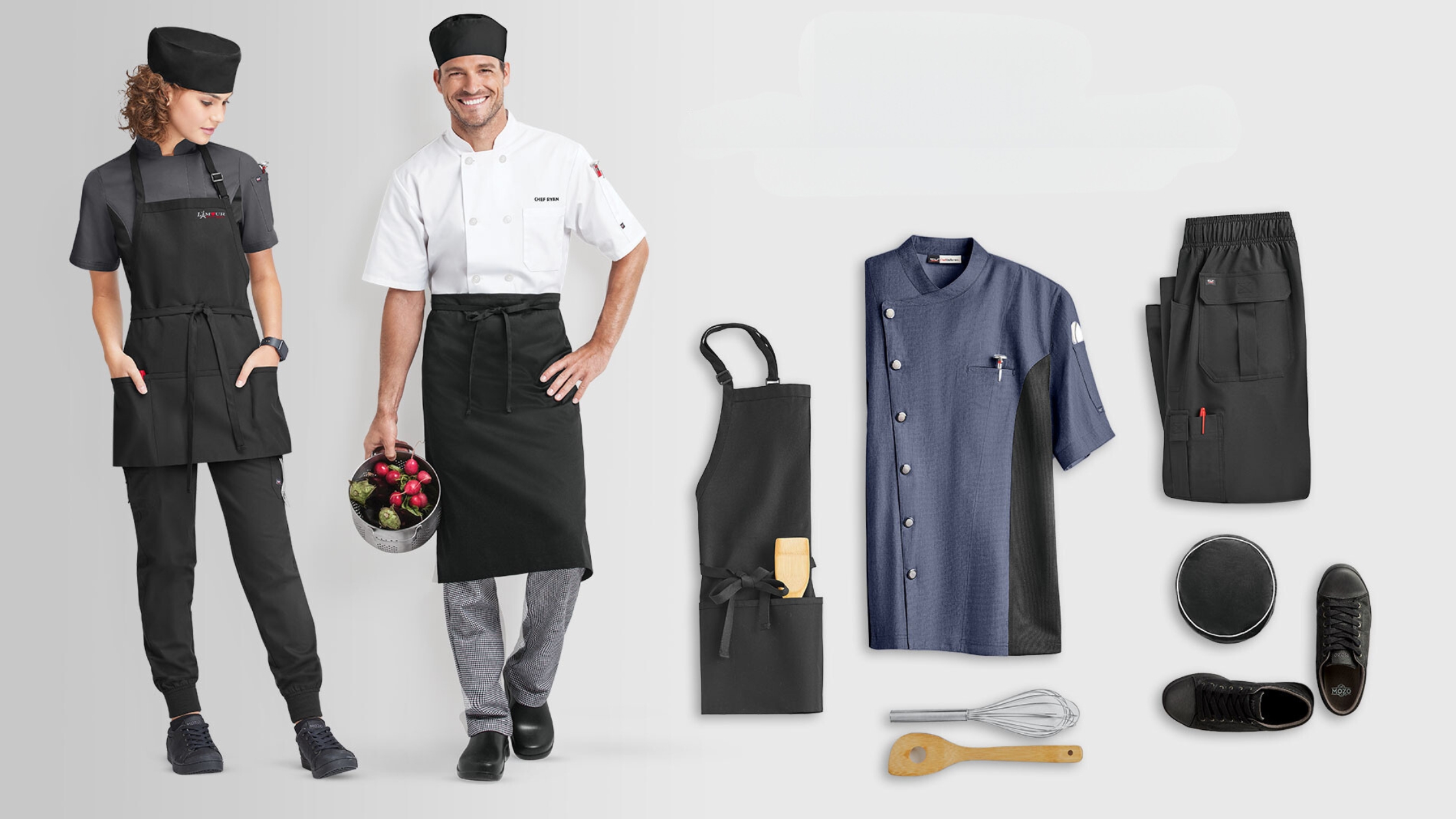Chef Uniforms Evolution
August 19, 2024
Sumitra Pandita

What should a typical chef wear?
A typical chef usually wears a chef's jacket, chef's pants, an apron, and a hat.
In the bustling kitchens of gastronomic havens, where culinary magic comes to life, a symphony of flavors unfolds. Behind this orchestra of tastes, there stand the conductors of this culinary symphony – chefs. These culinary artists not only showcase their mastery in creating delectable delights but also don a distinctive attire that represents their profession with honor and pride.
In this blog, we delve into the fascinating world of chef uniforms, unraveling the symbolism, evolution, and significance they hold in the culinary realm.
A Glimpse into the History of Chef Uniforms:
To truly understand the essence of chef uniforms, we must embark on a journey through time. The origin of chef attire dates back to the early 19th century in the kitchens of renowned French chef Marie-Antoine Carême. He devised the iconic white double-breasted jacket, known as the "chef's whites," as a symbol of cleanliness and professionalism.
Over the years, these traditional uniforms have evolved to cater to the changing needs and requirements of the culinary profession.
Symbolism Behind the Elements of Chef Uniforms:
- The White Jacket:
The pristine white jacket, often made of durable and breathable cotton, symbolizes purity and cleanliness. Not only does it reflect a chef's dedication to maintaining high sanitation standards, but it also allows easy identification of stains, ensuring that the kitchen stays immaculate.
- The Double-Breasted Design:
The double-breasted design serves both aesthetic and practical purposes. It enables chefs to quickly reverse their jackets to hide stains during service, ensuring a polished appearance throughout the day. Additionally, the double layer of fabric provides extra protection against the intense heat and potential kitchen hazards.
- The Checked Pants:
The classic checked pattern on chef pants has more than just visual appeal. It is strategically designed to hide stains and dirt, maintaining a professional look even in the most chaotic kitchen environments.
- The Apron:
The apron, draped over the chef's uniform, acts as a shield, safeguarding the clothing from spills and splatters while adding a touch of personality and individuality. Many chefs personalize their aprons, making them an artistic canvas for their culinary expression.
Evolution and Modernization:
As culinary practices have evolved, so have chef uniforms. While traditional whites still remain an essential aspect of the attire, some modern establishments have started adopting black or colored jackets to match their restaurant's aesthetic. Moreover, contemporary designs focus on comfort, functionality, and breathability, incorporating performance fabrics that allow chefs to move freely during their intense culinary routines.
The Role of Hats and Headgear:
The chef's hat, known as the toque, carries its own historical significance. In the early days, it was believed that the height of the toque indicated the chef's rank and expertise, with the taller hats reserved for head chefs. Today, the toque is more of a symbol of authority and respect, though its height may vary depending on the culinary establishment's tradition.
Unifying the Culinary Brigade:
Uniforms also play a pivotal role in fostering team spirit and a sense of camaraderie among kitchen staff. Wearing the same attire unites chefs under a common identity, emphasizing the collective pursuit of culinary excellence.
Conclusion:
The culinary world's enigmatic charm extends beyond the realm of flavors, encompassing even the chef's attire. As we explore the history, symbolism, and evolution of chef uniforms, we gain a deeper appreciation for the thought and craftsmanship that goes into these seemingly simple garments. The white jackets, checked pants, and distinguished toques form a cohesive symphony, guiding the culinary artists on their journey to create culinary masterpieces and showcase their expertise to the world. So, the next time you savor a sumptuous dish, remember the silent yet powerful presence of the chef's uniform, harmonizing the entire culinary experience.


